Do you want to easily and more effectively grow your online store?
You need to master your ecommerce marketing mix.
There are hundreds of ways to promote your online shop. But only a handful are really worth pursuing.
In today’s article, I’ll cover the five marketing channels that make up the perfect ecommerce marketing mix AND where to spend your energy for your unique business.
-
The Ecommerce Marketing Mix: An Overview
-
Channel #1: Paid Traffic
-
Channel #2: Social Media
-
Channel #3: Email Marketing
-
Channel #4: Search Engine Optimization
-
Channel #5: Communities
-
The Common Denominator Of These Channels
The Ecommerce Marketing Mix: An Overview
First things first. What does “ecommerce marketing mix” even mean?
It’s the combination of marketing channels you use to promote your business.
While there are a LOT of different channels, in this guide, you’ll learn about the five most popular.
Each of these has the ability to grow your online business in their own right. When combined, they complement each other and scale exponentially faster.
Let’s get started!
Channel #1: Paid Traffic
The easiest, fastest, and most familiar way of driving sales to an online store is paid traffic. You’ve probably even used it before.
The only drawback to paid advertising is, well, it’s paid! If you stop putting money in, you stop getting money out.
But did you know that paid advertising can actually boost other areas of your business beyond simple sales?
For example, one of Google’s ranking factors is user engagement. If you get more clicks on your page over the other results, there’s a chance they’ll bump you up.[*]
By running Google and Facebook ads, you’re exposing your brand to more people.
The more they see your site, the more familiar they become with your brand name. The more familiar they are with your brand, the more likely they’ll click on your site over higher-ranking competitors on Google because they know and trust you.
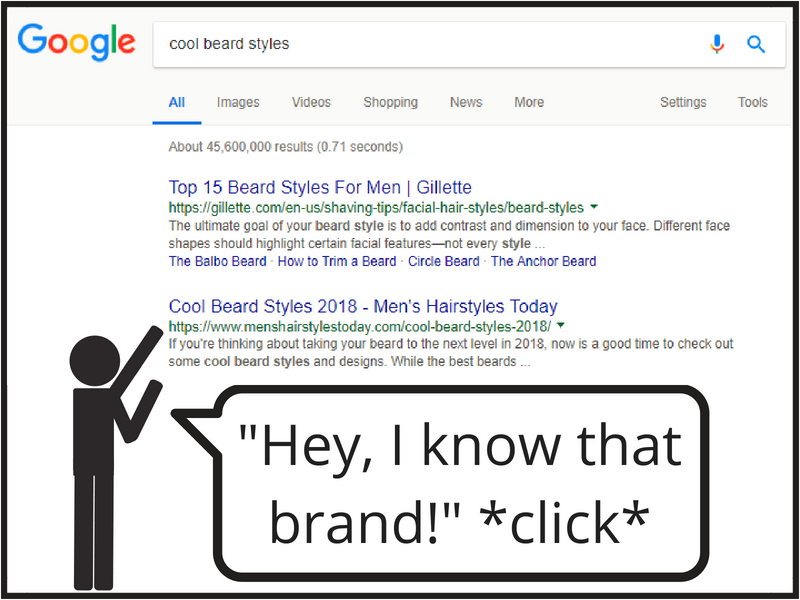
By using paid ads as part of your ecommerce marketing mix, you’re increasing brand awareness and trust across other platforms. They’re a key part of a full marketing strategy.
In other words: If you can make a budget for paid ads, do it.
Consider hiring an outside agency to help you with it if you don’t have the time or expertise to create ads yourself.
Pro Tip: I recommend everyone test paid ads regardless of the other channels they use. You can use paid ads to create a direct and scalable ROI if you’re willing to spend money buying data and testing different audiences to find what works for your business. And, once you find the keywords that convert, then you can launch an SEO campaign targeting those keywords. That way, you can be 99% sure they’ll convert for you before you spend the time and energy on SEO.
Dive Deeper:
-
Ecommerce Facebook Ads: $1,000,000 Ad Spend, 4X ROI (Hint: Puppies)
-
How I Recovered 2,328 Abandoned Shopify Carts With YouTube Ads
-
How Huckberry Went From $10,000 To $1,000,000 Revenue In 1 Year
Channel #2: Social Media
Social media is one of the biggest opportunities — and sources of frustration — for ecommerce store owners.
On the one hand, you can build a massive, loyal following of people who buy everything you put out and beg for more products. That’s the dream.
On the other hand, it’s a total time waster, filled with disappointing engagement on posts and superficial metrics that don’t really matter.
How do you achieve the former?
Stick with one channel and slowly build it. Once you’ve mastered (and, hopefully, automated) that channel, add on another.
Which channel you choose depends on your current skill set and ecommerce store niche.

If you or your team is good with photos, give Instagram a shot. If your Facebook page is already getting some traction, double down there. If video is your forte, try YouTube.
Regardless of which social channel you choose, I highly recommend setting up this Pinterest traffic strategy. It’s quick and automated, so you can still focus on building another channel at the same time.
How do you know if social media should be a part of your marketing mix?
The quickest and easiest way is to see if your competition is getting traction there. Chances are if your competitor has amazing social media channels with a lot of engagement (emphasis on the engagement, not the raw number of followers), then social media may be lucrative for you as well.
Pro Tip: Despite what you may have heard, social media is NOT a requirement to market your online store. My site, The Wandering RV, gets over 100,000 monthly visitors from Google alone — and we’ve put zero effort into growing our social media channels (aside from Pinterest, which accounts for ~10% of our traffic and takes less than 30 minutes of our time every week).
Dive Deeper:
-
Ecommerce Influencer Marketing Strategy (Hint: Better Than Buying Shoutouts)
-
Ecommerce Product Commercials Strategy (Hint: One-Of-A-Kind Videos)
-
How These Ecommerce Entrepreneurs Use Instagram To Drive Massive Sales
-
6 Psychology Hacks That Immediately Increase Your Social Media Engagement Rates
Channel #3: Email Marketing
Email marketing is a crucial piece of any ecommerce marketing mix.
Regardless of the other marketing channels you choose to use, you should include email. It’s an easy addition to every other strategy.
You’re probably already sending transactional emails, like order and shipping confirmations. But you can be doing SO much more with your email list!
Are you sending a welcome email that makes your subscribers feel like part of a community? What about surveys to learn more about your customers, or motivational emails that help them achieve their goals?
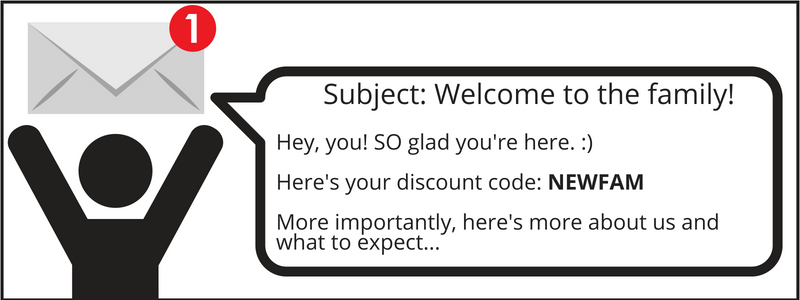
There are four types of emails you should send to your list. If you’re not already sending them, you better get on that!
Before you send anything to your list, you actually have to have a list. If your list is small or nonexistent, there are things you can do to get more subscribers, such as:
-
Installing Sumo and using our Grow Email List Shortcut to create timed popups. (Click the button below to try it for free)
-
Offering a discount, free trial, or penny product in your popups.
-
Creating a content upgrade to add to your blog posts.
Email is great because automation and popups do most of the work for you. Just set everything up once and watch the sales roll in.
Dive Deeper:
Channel #4: Search Engine Optimization
Search Engine Optimization (SEO) is the art of optimizing your website around keywords to show up in the results of a search query.
For example, when someone Google’s the term “RV Accessories,” I’m the #2 result (under the ads) thanks to SEO efforts:
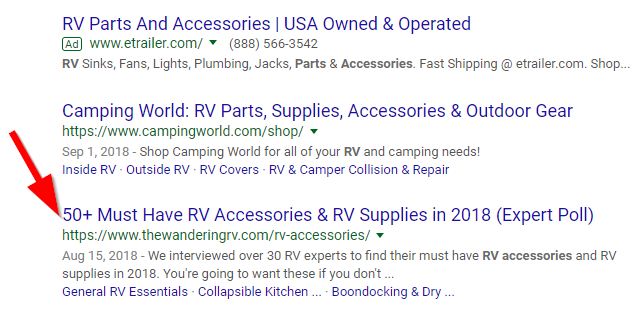
This one page brings my site roughly 15,000 visitors per month. That’s 15,000 people, every month, looking to buy some stuff.
SEO can bring you recurring, high-quality traffic that converts.
Plus, if you stop paying your SEO person or stop working on SEO, you’ll still have any rankings you achieved for a long time (unless someone else creates better content and builds more links than you).
So how do you get started?
Here are some actionable steps:
-
Install an SEO Plugin/App: Yoast SEO for WordPress, Plug in SEO for Shopify or BigCommerce, or SEO Suite Ultimate for Magento. These help you optimize your individual pages easily.
-
Do some keyword research. You may be targeting the wrong keywords if you haven’t done this before. If you're selling a product, look at competing products on Amazon to see what keywords they use in their title.
-
Write blog content. While you can optimize your product and category pages for search, high-quality blog content helps you build links and rank for keywords you otherwise wouldn’t be able to.
-
Get featured on other sites. For example, writing guest posts or appearing as a guest on podcasts can help drive exposure to your brand and build links to your site, which are both important Google ranking factors.
Of all the channels in your marketing mix, SEO takes the longest to work. So don’t be discouraged if you’re not hitting page one after a few months; it can take 6-12 months (or longer) to start seeing results.[*]
So when is SEO right for you?
The best answer is to start now since it takes so long to kick in. However, we’re going into winter as I write this, and if you create gift guides or content around holiday-related keywords, you probably won’t rank in time for the holiday season.
My recommendation: Write the guides anyway, and use Google Ads and Facebook Ads to drive traffic directly to them to see if they’re worth putting the effort of building links to get them to rank. If they don’t convert, then you can put your time into another channel or find other keywords to test.
Dive Deeper:
Channel #5: Communities
Our final channel, communities, is probably the most fun and rewarding.
Why?
Because you get to interact with real people on a day-to-day basis. You get to see how your content and your products impact people's lives and get real feedback.
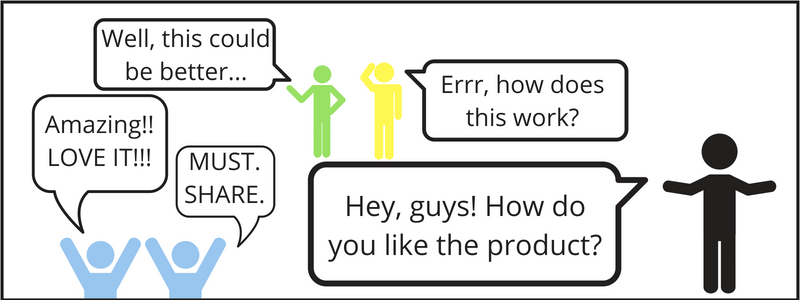
Communities exist in a variety of places, such as forums and social media networks. To find them, you may need to do some digging.
Try these steps:
-
Search “[Your Niche] forum” on Google. Doing so will help you find forums of people who talk about your niche. Add any promising URLs to a spreadsheet, with the name and email of the site owner or editor.
-
Search for your niche on Facebook. Add any highly engaged groups to your spreadsheet. Anything that gets lots of comments is perfect. Look for a minimum of 5-10 comments, but depending on the popularity of your niche, you should look for at least a few dozen.
-
Get involved. Start posting to the forums and groups. Provide value and don’t link to your products yet. Answer people’s questions and be helpful.
-
After a few weeks to a month, post your product(s). Once you’ve established rapport with the community, feel free to drop a product or blog post link. Just don’t do it too often, and make sure you do it in a way that’s helpful and not spammy, like responding to someone’s question with an answer and a link to your blog post for more info.
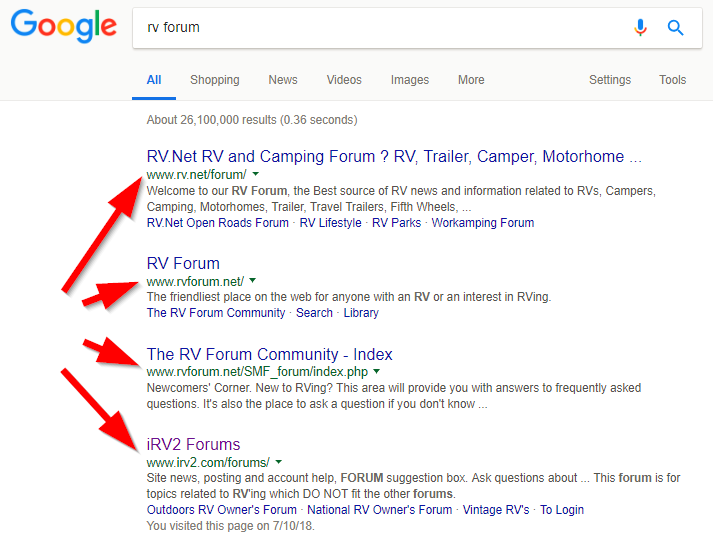
And that’s all there is to it! The more involved you are in a community, the more you can expect in return. It’s a lot like karma!
You can also build your own community (like a Facebook or Slack group). It’s usually more lucrative since you control how often you post your own stuff, but it also takes much longer and is more time-consuming to maintain.
Is this channel one you should add to your marketing mix?
It depends on if you have more time or money. If you have money but no time, stick with paid ads or hire someone to build communities for you. If you have time but no money, add communities to your to-do list.
Dive Deeper:
The Common Denominator Of These Channels
No matter which channels you add to your store’s marketing mix, they all require one thing…
Quality.
Writing 10 great posts on social media or 10 high-quality articles will always be better than writing 100 crappy ones.
Whether you’re writing emails for your drip campaign or adding keywords to optimize your pages for search, always put quality first.
What does that mean?
- Seek to add value. Answer your customers’ questions, make people laugh, or teach them something new.
- Cut the fluff. Less is often more. If you’re the kind of writer that drags on, hire an editor to help you cut things down or read your content out loud to see how it sounds before using it. Preferably both.
- Optimize for users first. While search engines look at statistics and keywords, they’re still trying to do what’s right for people. If adding a keyword makes the passage awkward and stilted, don’t do it. Rewrite the content so it makes sense for your reader. Try to find a way to add your keywords that still reads well (reading your content out loud can help you do this).
- Have an eye for design. Design matters. More than you might think. People judge a webpage in under one second, and if it’s ugly, they might just leave. Consider getting advice from a designer or using a pre-designed template if you need help with the design of your content.
As long as you focus on improving the user experience for your site visitors and customers, you’ll get more out of your marketing mix.
Ready to create your perfect ecommerce marketing mix?
Download My Ecommerce Marketing Mix Budget Calculator
Your marketing mix may be too complicated or too light.
To fix that, focus on these five channels — but to get the most out of them, focus on one channel at a time. Master it, then move on to the next.
Not sure where to start or which to use? Click the button below to get my marketing mix budget calculator and determine the right mix for your particular resources.
Ecommerce Marketing Mix Budget Calculator
Related Articles
%(relatedarticles)
Add A Comment
VIEW THE COMMENTS